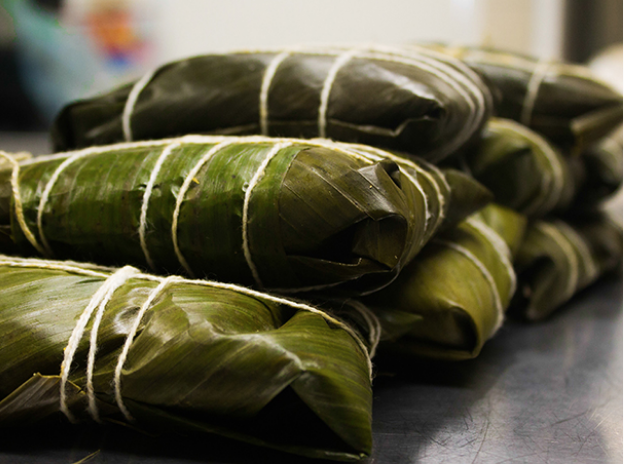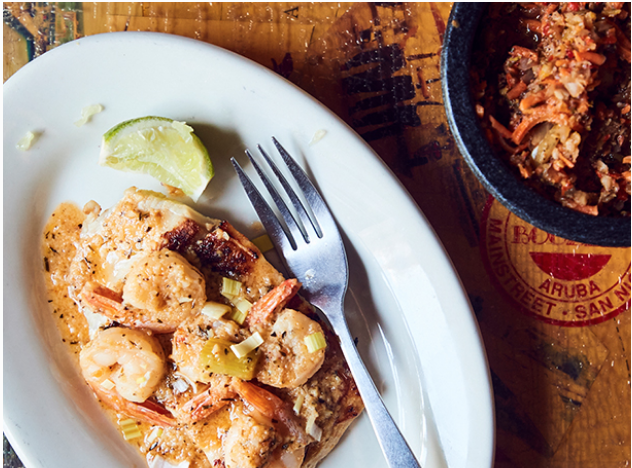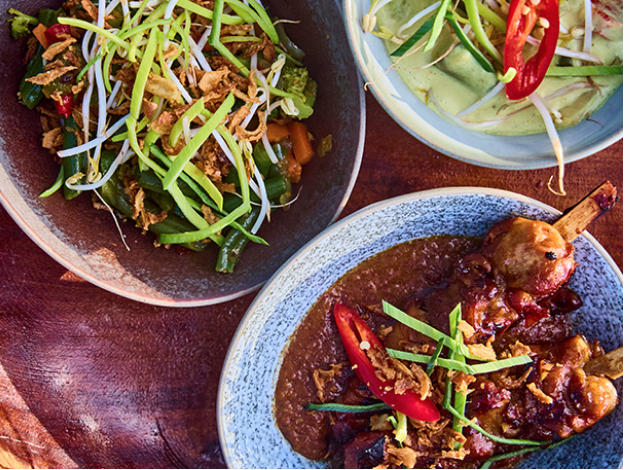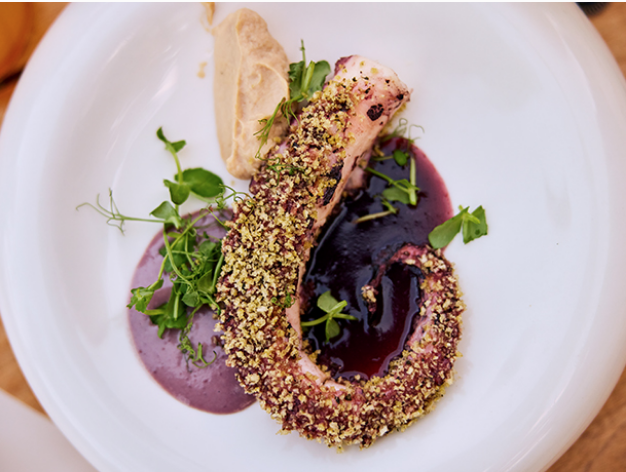Why You Should Skip the All-Inclusive Resort in Aruba

Why You Should Skip the All-Inclusive Resort in Aruba
Aruba is a tropical paradise, famous for its stunning white-sand beaches, crystal-clear waters, and perfect year-round weather. When planning a trip to this Caribbean gem, many travelers consider booking an all-inclusive resort to streamline their experience. While all-inclusive resorts in Aruba are luxurious and convenient, they can also limit your experience of the island’s vibrant culture, especially when it comes to food.
If you’re visiting Aruba, one of the best ways to immerse yourself in the island’s unique vibe is by
skipping the resort dining options and exploring the
local food scene instead. Aruba’s culinary landscape is a reflection of its diverse cultural influences, with flavors shaped by the island’s history, geography, and the fusion of Caribbean, Latin, African, and European cuisines. By venturing out beyond the resort walls, you'll have the opportunity to discover
authentic local flavors that tell the story of Aruba and its people.
Here’s why you should trade the buffet for a more
authentic Aruban dining experience:
1. Savor the Local Cuisine and Discover Unique FlavorsAruba’s food scene is rich with unique dishes that combine the island’s multicultural heritage. While all-inclusive resorts often serve generic international dishes,
local restaurants offer a chance to experience authentic flavors that reflect Aruba’s cultural diversity.
- Keshi Yena: This is one of Aruba's most famous dishes. It’s a stuffed cheese casserole, usually filled with spiced chicken, beef, or seafood, wrapped in a large round of melted cheese. It’s a hearty, flavorful dish that’s a must-try.
- Aruban Stew (Sopa di Pescado): This fish stew is made with the freshest local catch and flavored with island spices, vegetables, and often a hint of coconut. Served with rice, it’s a comforting, traditional meal that gives you a taste of the island’s seafood culture.
- Pastechi: A popular snack or breakfast item, pastechi is a savory pastry filled with cheese, chicken, or beef. These delicious pockets of goodness are often enjoyed by locals with a cold drink.
- Aruban Goat Stew (Cabrito Stoba): Goat meat, slow-cooked with local spices, tomatoes, and vegetables, is another iconic dish of Aruba. It’s a true reflection of the island’s Dutch-Caribbean culinary heritage.
By stepping out of your resort, you can enjoy dishes like these at local eateries, offering an opportunity to experience Aruba’s food culture in its purest form.
2. Support Local Restaurants and EconomiesWhen you choose to eat at local restaurants, you’re directly contributing to
Aruba’s economy and supporting small businesses. Resorts, especially all-inclusives, often source food from larger suppliers and corporate chains, meaning much of the money spent stays within the resort's system rather than benefiting the island's local farmers, fishermen, and cooks.
Local eateries, food trucks, and street vendors, on the other hand, provide fresh, locally sourced ingredients that reflect the island’s agricultural and fishing practices. By choosing to dine at these spots, you're not only experiencing authentic food but also helping local entrepreneurs thrive and preserving the island's unique culinary heritage.
3. Experience the Island’s Culture and PeopleFood is a great way to connect with a culture, and Aruba's diverse population has created a melting pot of culinary traditions. From the Spanish influence in dishes like
Arroz con Pollo (chicken with rice) to the African influences in seafood dishes, eating locally allows you to engage with Aruba’s cultural history.
Dining in a local restaurant also gives you the chance to chat with friendly Arubans, hear their stories, and learn more about their island way of life.
Local chefs and restaurant owners are often eager to share their personal stories, making for a memorable experience that an all-inclusive resort can’t offer.
Whether it’s dining in a
family-owned seafood shack or a lively
Caribbean-themed cafe, you’ll get a deeper sense of the warmth and hospitality that define the Aruban culture.
4. Discover Hidden Gems Beyond the ResortWhile all-inclusive resorts may offer a handful of decent dining options, Aruba is home to some
hidden food gems that aren’t found in the resort area. These are the restaurants, food trucks, and beachside shacks that locals frequent and that offer incredible meals at affordable prices. Some top spots include:
- The Old Fisherman: A beloved restaurant for fresh seafood, The Old Fisherman offers authentic Aruban dishes like seafood paella and grilled fish. The restaurant is located a little off the beaten path, making it a great choice for those looking to enjoy local flavor.
- Zeerover: A popular local seafood joint known for its fresh fish, shrimp, and fried plantains. Zeerover sits right on the water and is a favorite among both locals and savvy travelers who want an authentic Aruban seafood experience.
- Café 080: Located in the heart of Oranjestad, this local hotspot serves a mix of Caribbean and Aruban fusion dishes, all made with fresh, local ingredients. The relaxed atmosphere and friendly vibe make it a great place to experience island life.
These are just a few examples of the many eateries that offer authentic, fresh food you won’t find in a resort’s all-inclusive restaurant. Exploring these places is a key part of the
Aruban experience.
5. Escape the Crowds and Enjoy Peaceful DiningAll-inclusive resorts can often feel crowded, especially during peak tourist seasons. Buffets, large dining rooms, and limited seating can make mealtime feel rushed and impersonal. Dining at a local restaurant, however, allows you to escape the resort’s hustle and bustle and enjoy a more
peaceful and intimate dining experience.
Whether you're enjoying a quiet beachside meal, a vibrant outdoor terrace, or a small family-run bistro, local restaurants offer a chance to unwind, relax, and savor your meal at your own pace. You’ll be able to take your time, enjoy the atmosphere, and appreciate the flavors of Aruba without feeling like you’re one of hundreds of tourists being served at the same time.
6. Try Unique Island Drinks and CocktailsAruba isn’t just known for its food—it’s also a hotspot for unique tropical drinks and cocktails. While all-inclusive resorts usually offer standard drinks, venturing out to local bars and restaurants opens the door to trying some unique and refreshing Aruban beverages:
- Aruba Ariba: This iconic cocktail is a mix of rum, vodka, banana liqueur, orange juice, and grenadine, all topped with a maraschino cherry. It’s a tropical delight you won’t want to miss.
- Balashi Beer: Brewed locally, this light and refreshing beer is perfect for a hot day on the beach. It’s the island’s most famous beer, and enjoying it at a local bar or restaurant gives you a true taste of Aruba.
- Coco Loco: Served in a coconut shell, this cocktail is made with rum, vodka, coconut cream, and pineapple juice, offering a sweet, tropical taste that’s a true island experience.
Local bars and restaurants will often have their own signature cocktails or twists on island classics, making it a fun experience to explore.
7. Avoid the All-Inclusive TrapsFinally, all-inclusive resorts often encourage tourists to spend most of their time on-site by offering activities, meals, and drinks included in the price. While this can seem convenient, it can also limit your opportunities to explore the island, meet locals, and experience Aruba beyond the confines of the resort.
The
overpriced souvenirs, the over-saturated “tourist attractions,” and the lack of authentic experiences are some of the drawbacks of staying at an all-inclusive resort. By choosing to eat at local restaurants, you’ll automatically be
venturing outside the tourist bubble, making the most of your time on the island, and discovering its true heart and soul.
In Conclusion: Embrace the Local Flavors of ArubaAruba’s local food scene is one of the island’s most exciting and delicious features. By choosing to dine at local restaurants instead of sticking to an all-inclusive resort, you’re not only treating your taste buds to authentic flavors, but you’re also supporting the local community, connecting with the island’s rich culture, and discovering hidden gems that most tourists miss.
So, next time you’re planning a trip to Aruba, consider
ditching the buffet and exploring the island’s amazing food scene. Your stomach—and your travel experience—will thank you!
Are you looking for specific restaurant recommendations or tips on finding the best local eateries in Aruba?
Let me know, and I’d be happy to help!




